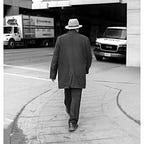What is street photography?
Street photography is a genre of photography that has gained immense popularity in recent years. It involves taking photographs of everyday life and people in public places, often capturing candid and unposed moments. The appeal of street photography lies in its ability to capture the essence of a place or a moment, and to tell stories through images.
The roots of street photography can be traced back to the early days of photography, when photographers such as Eugène Atget and Henri Cartier-Bresson captured candid scenes of everyday life in the streets of Paris. However, it was not until the 1950s and 1960s that street photography became a recognized genre in its own right, with the work of photographers such as Robert Frank and Garry Winogrand.
In the decades that followed, street photography continued to evolve and expand, with photographers from all over the world capturing unique and compelling images of their surroundings. Today, street photography is more popular than ever, with social media platforms such as Instagram providing a platform for photographers to share their work and connect with others in the community.
One of the key elements of street photography is the ability to capture candid and unposed moments. This requires a certain level of skill and patience on the part of the photographer, as they must be able to anticipate and react quickly to the unpredictable nature of their surroundings. This can involve observing people and their behavior, as well as anticipating changes in lighting and other environmental factors.
Another important aspect of street photography is the use of composition and framing to create compelling images. This can involve using the rule of thirds, leading lines, and other techniques to create visual interest and draw the viewer’s eye to certain elements within the frame. It can also involve experimenting with different perspectives and angles, such as shooting from a low angle or from above, to create a unique and dynamic image.
One of the challenges of street photography is navigating the ethical considerations that come with photographing people in public spaces. While it is generally legal to take photographs in public spaces, photographers must be mindful of the privacy and dignity of the individuals they are photographing. This can involve seeking consent from subjects before taking their photograph, or being discreet and respectful when photographing in sensitive or vulnerable situations.
Despite these challenges, street photography remains a vibrant and exciting genre of photography, offering a unique perspective on the world around us. Whether capturing the hustle and bustle of a busy city street or the quiet moments of everyday life, street photography has the power to capture the beauty, complexity, and humanity of our world in a way that is both compelling and accessible to all.
For those looking to get started with street photography, there are a few key tips and techniques that can be helpful. First and foremost, it is important to practice observing the world around you and to be patient and alert for those fleeting moments of beauty and interest. This can involve paying attention to the play of light and shadow, the movements of people and animals, and the shapes and patterns that make up our urban and natural environments.
Another important aspect of street photography is to experiment with different types of cameras and lenses to find the equipment that works best for you. While some photographers prefer to use traditional film cameras, others may prefer the convenience and versatility of digital cameras. Similarly, some photographers may prefer to use wide-angle lenses to capture the expansive vistas of the city, while others may prefer the intimacy and detail of a telephoto lens.
Ultimately, the key to successful street photography is to be true to your own voice and vision as a photographer. Whether you are capturing the gritty reality of urban life or the poetic beauty of a quiet moment in nature, your photographs should reflect your own unique perspective and creative vision. By honing your skills and developing your own style, you can create powerful and meaningful images that capture the essence of our world
